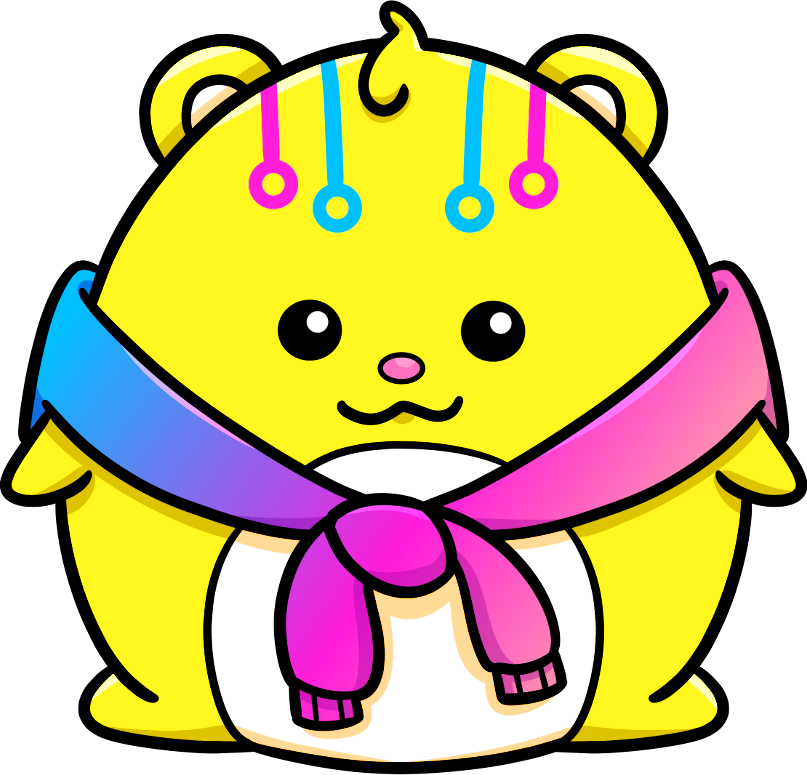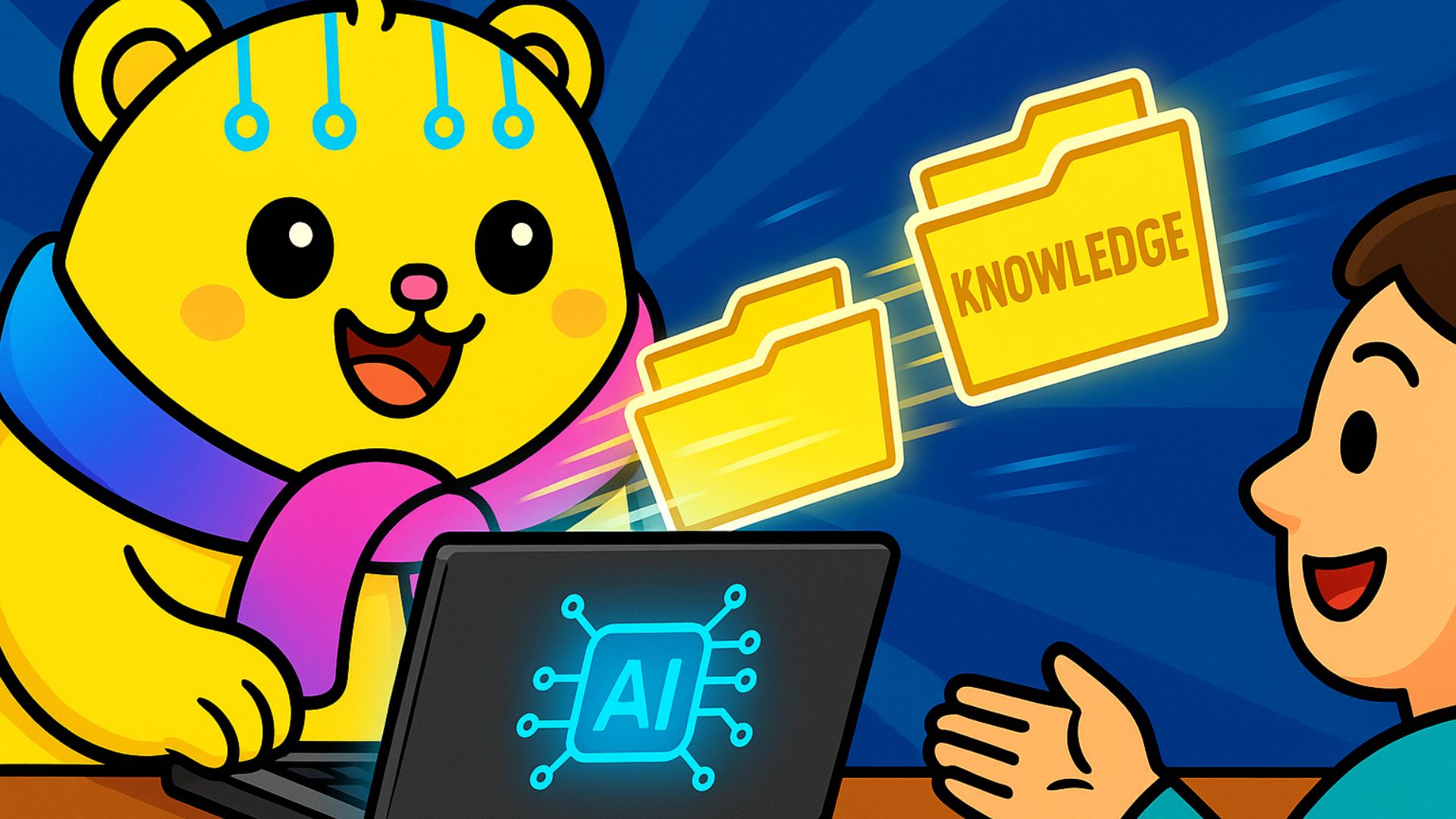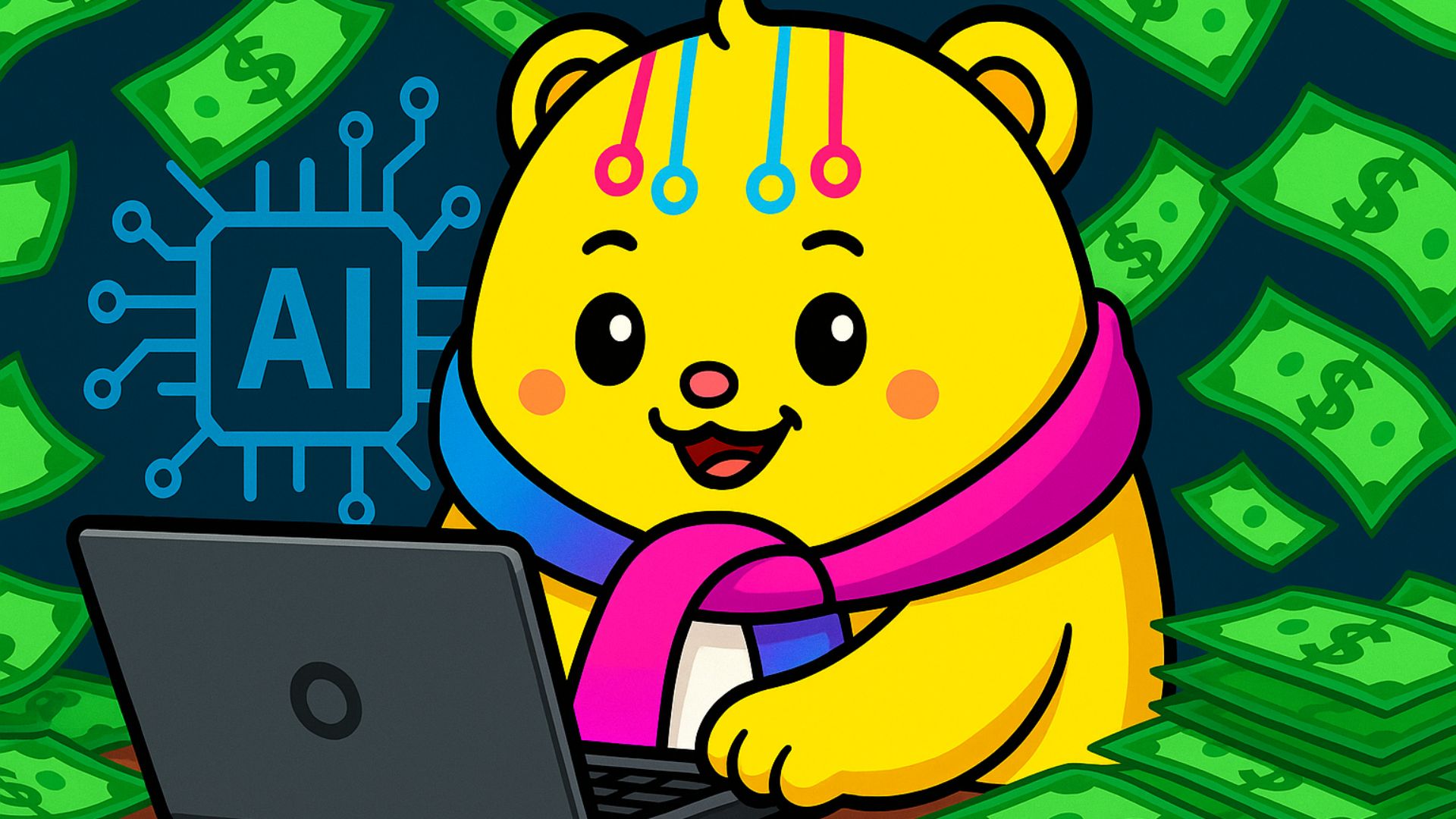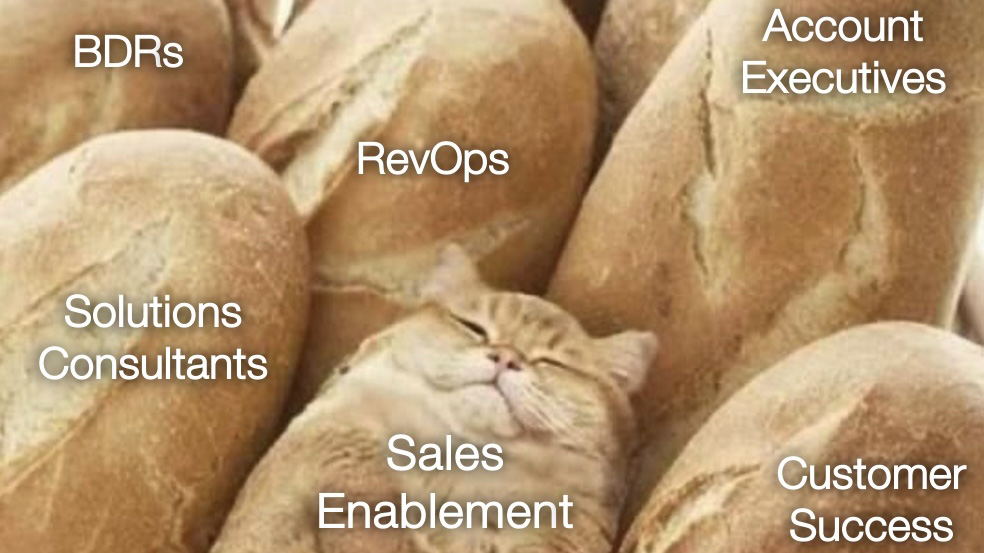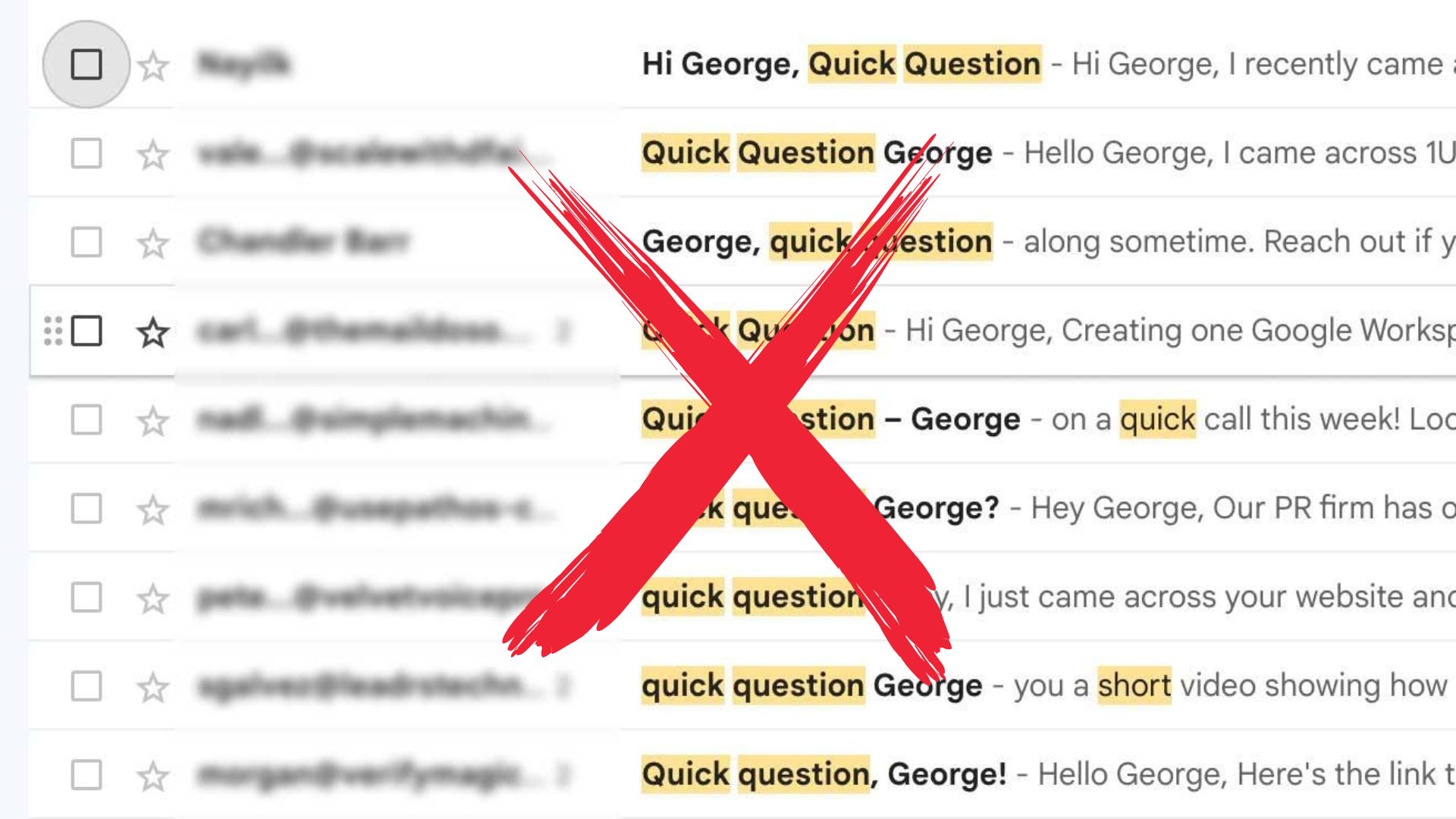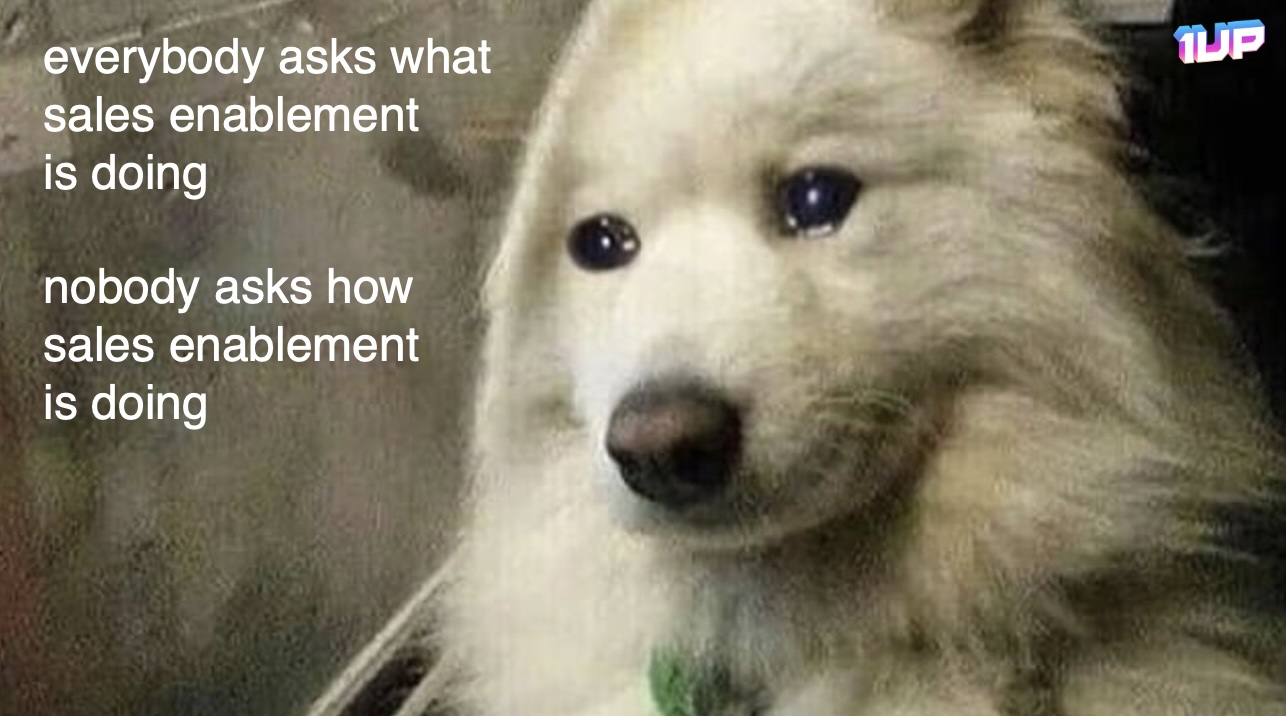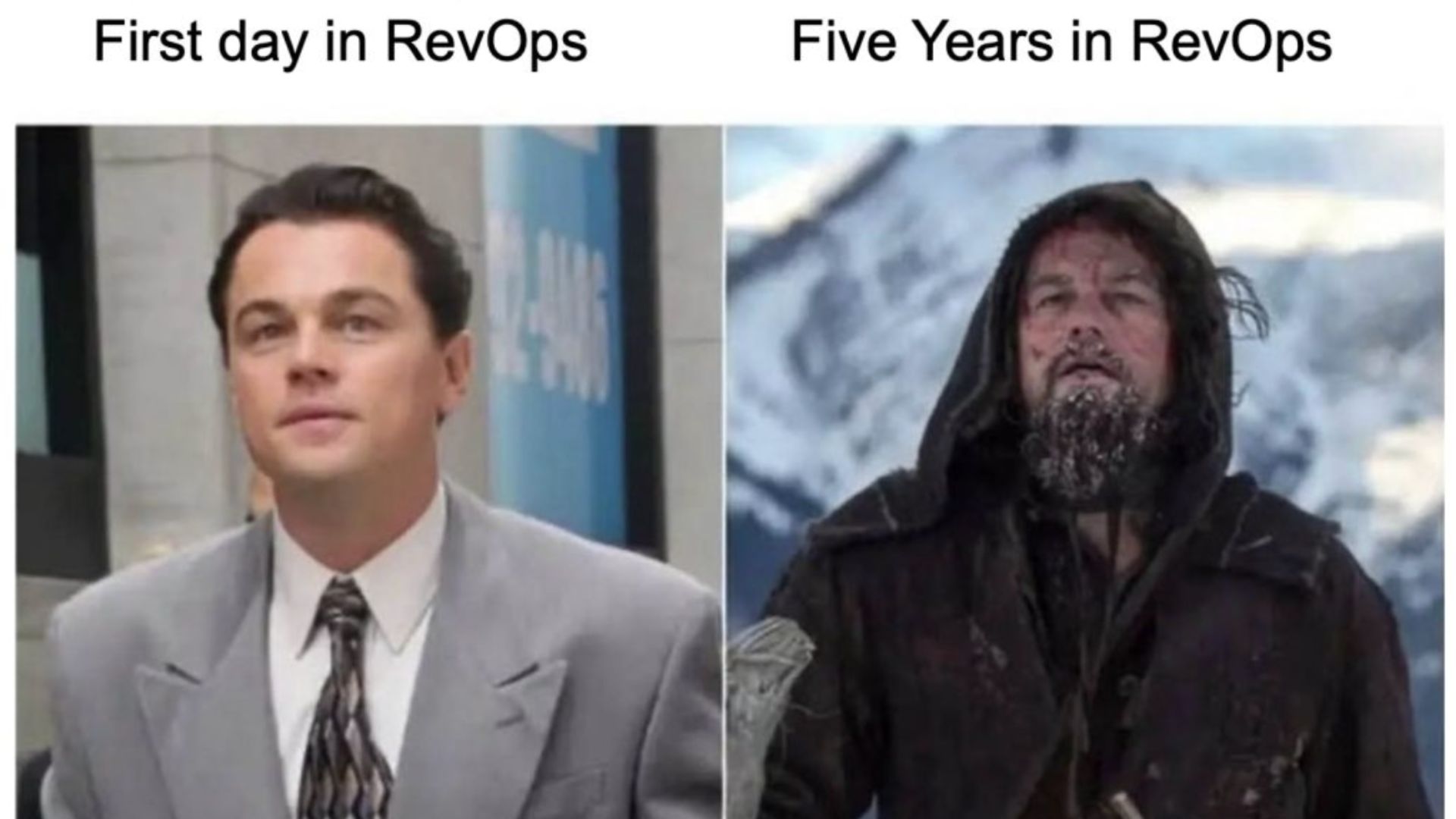Sales enablement teams are under more pressure than ever. Buyers expect fast answers, competitors are moving quicker, and the sheer amount of sales knowledge reps have to manage is overwhelming.
The old way of handling sales enablement, pushing out playbooks, running quarterly trainings, and hoping your rep can retain the information, simply is not cutting it anymore.
That’s why the biggest trends for 2025 are all about agility, sales enablement automation, and AI-powered experience.
Instead of sifting through outdated resources or relying on memory, a sales rep needs real-time access to the right information, exactly when they need it. The future of sales enablement isn’t just about creating marketing assets and 1-pagers. It’s about making knowledge and personalized content instantly accessible.
Key sales enablement trends, across the board, directly relate to centralizing, accessing, and appropriately utilizing knowledge. That might include sales talk tracks, marketing collateral, or even a simple 1-liner to respond to customer objections.
As these new sales trends set in, businesses that adapt will see faster deal cycles, more confident sales teams, and a competitive edge.
Key Takeaways
- The way sales knowledge is managed by sales teams is shifting toward a pull-based approach that calls for an instantly accessible, AI-powered content library.
- Large Language Models have made it possible to automate the delivery and personalization of specific knowledge and content in ways previously unavailable.
- Centralizing data, making it available across multiple channels, and hyper-focusing on personalization will be crucial for future success in sales.
1. A Shift to Pull-Based Enablement
Sales enablement strategy has remained a (mostly) push-based model up to this point.
Create content. Train your sales rep. Deploy them to the field.
Identify gaps in your program. Deliver supporting assets.
Repeat.These are some of the workflow loops of sales enablement strategies. The function revolves primarily around a push-based approach to delivering content, training, and support. Those program elements look something like this:
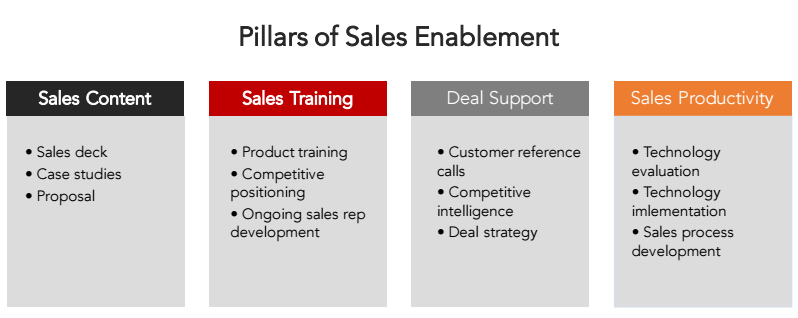
Content is created and handed off to reps. Sounds simple enough, right?
The problem is this model leads to common hurdles + complaints from sales leaders:
- “Where do I find that sales asset?”
- “What did the training guide say? I already forgot.”
- “I’m not sure how to respond to this customer objection.”
- “I need to pull in an engineer to answer this question.”
- “How do I do X?”
These concerns primarily stem from the push-based approach. We’re of the view that it’s no longer effective or viable for sales performance. Reps are overwhelmed with information to the point where they would rather ask a teammate for help than go digging for answers. No amount of content creation in your sales strategy can alleviate that pain.
This information overload problem is similar to the issues with knowledge management we previously discussed but is more acute as it directly impacts the sales process.
A pull-based approach flips this model upside down by making it easy for reps to get enablement content on demand.
We can no longer force content and training in hopes that reps will use it. Instead, we can encourage them to access the knowledge they need when they need it most. Whether it’s for responding to a customer objection, a competitive comparison, or a technical questionnaire, your sales organization has got to change.
So, what should you do?
Create sales enablement content that’s easy for a Large Language Model (LLM) to understand.
Here’s what that looks like in practice:
Thinking back to the pillars of enablement, we can expect user experiences to change dramatically in a pull-based sales productivity model.
For example:
- Self-Service Sales Training: LLM-optimized content can be used to automate sales coaching in real-time. This ensures that sales reps can get the right talk track when they need it most, whether that’s in the middle of a sales call or in preparation for a live meeting.
- On-Demand Asset Delivery: Creating sales content is hard enough. Watching it go to waste is even more painful. Rather than searching for content, we should allow reps to ask for it. The demo above shows how easy it is for a user to simply ask for “a good customer case study” and get a response in seconds rather than having to manually search for it. That’s serious buyer enablement.
- Quick Responses for Customer Objection Handling: This is where good playbooks, sales assets, and battle cards come into play. Optimizing this content for LLMs can make objection handling easier for sales teams by automatically generating answers to specific customer questions. Your sales success will soar with this kind of sales enablement technology.
- RFP and Questionnaire Automation: Technical questionnaires are repetitive, tedious, and involve a ton of text-based knowledge. And in the current model, enablement professionals need to push RFPs and Questionnaires onto their teammates in hopes of getting a quick turnaround. This makes RFP automation a perfect use case for Large Language Models and furthers the case for a pull-based workflow.
2. AI, Plus AI, and More AI
It feels like generative AI is everywhere these days.
How many tools do you own that have added a chatbot?
How many of those chatbots does your sales team actually use?
In many cases, chatbots are simply regurgitating information they find on the internet without context and often with hallucinations. On their own, mindless chatbots do nothing to help raise actionable insights or improve a revenue enablement program.
Instead, you want to make your content accessible to AI and limit its mining range to that content. That way, you have total control of the AI’s knowledge while delivering it to your sales reps in seconds.
If you want to shift your sales enablement strategy to a model that actually works in real time, AI is a must-have component – so long as you focus it on solving a specific problem. Wether that means personalizing talk tracks or answering technical product questions – is up to you.
Here’s an example of how that looks in Slack:
Forget dumping blog and social media content on reps and hoping they remember it. Instead, AI can ensure the right knowledge is delivered exactly when it’s needed, without anyone having to go digging for it.
But let’s get one thing straight: simply buying an AI sales enablement tool won’t fix everything. The real key here is adjusting how you create, store, and manage sales knowledge so it actually works with AI systems. If your content isn’t structured properly, even the smartest AI won’t be able to make it useful for your team.
Here’s how to make your enablement content AI-ready:
Optimize for text-based content
Focus on creating sales assets that are easy for a machine to read. Content that is visually appealing for a human is not necessarily easy for a language model to use.
For example, high-end graphics and image-based tables are great for humans, but they can sometimes be difficult for an LLM to parse. Prioritizing text quality will greatly impact how the models “see” your content and will, in turn, make it easier to deliver that information to the team.
Pro Tip: Use universal file formats where possible.
LLMs work well with PDFs, Word docs, Excel sheets, and other common formats. This doesn’t mean you shouldn’t create visually appealing graphics, videos, and web-based content at all – just remember that you’ll get more mileage out of LLMs with universally recognized documents.
Keep your knowledge base fresh
It doesn’t matter if you use 1up, Dropbox, or Google Drive to store your sales assets – keep your content in one place and make sure it’s up-to-date.
Enablement leaders who leverage AI need to remember the golden rule: “Garbage in = Garbage out.” We need to think of knowledge sources as a key component of their program and the foundation for all AI-generated content that makes its way to the sales team.
You should be able to connect knowledge from multiple repositories like this:
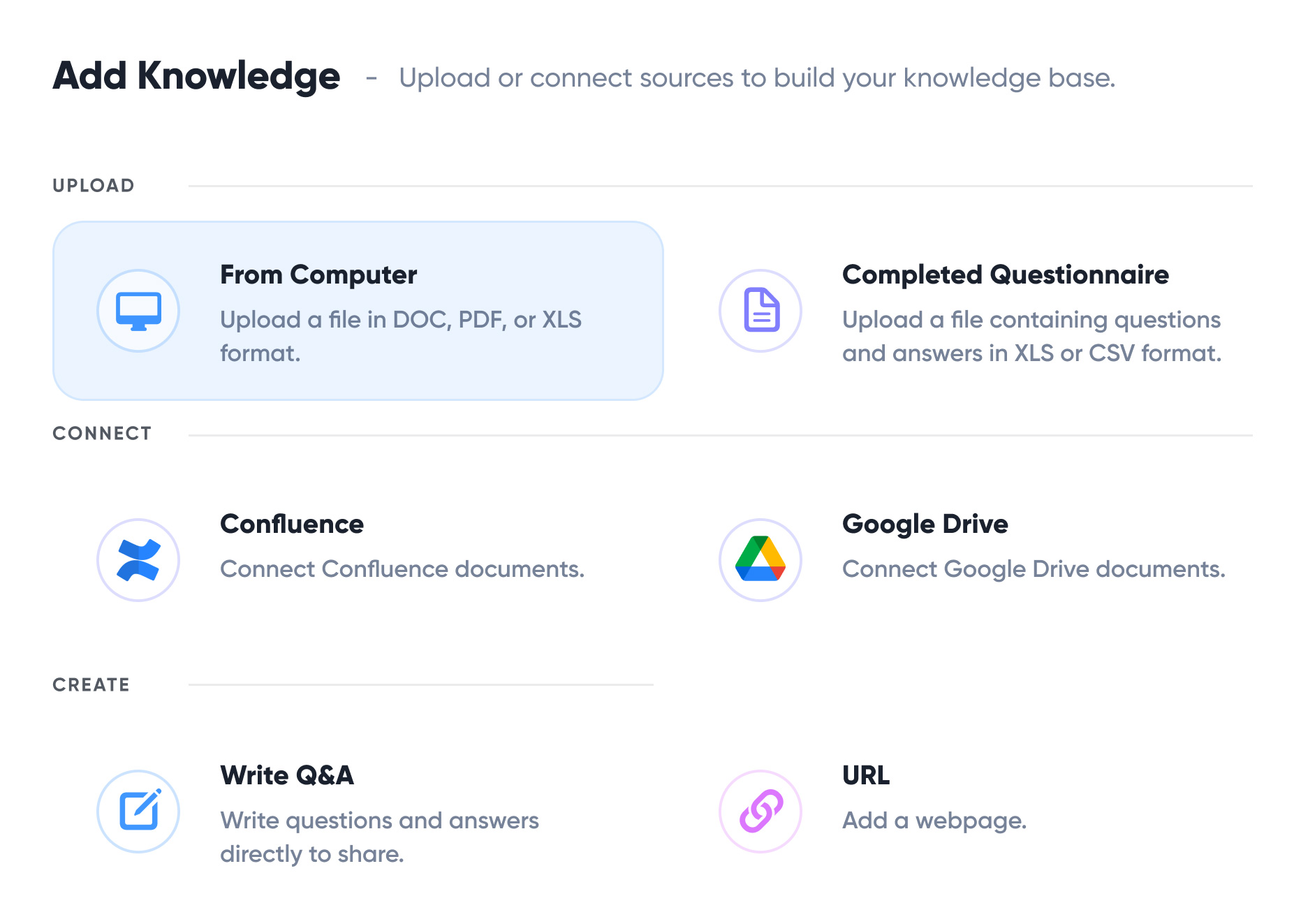
Pro Tip: Choose a knowledge base that reps can chat with directly from Slack or Microsoft Teams. A knowledge base with an integrated chatbot makes it easy for sales teams to get information quickly without having to switch tabs or search for documents.
Allow users to upvote / downvote AI-generated content
Enablement does not work if it’s a one-way street. The best sales leaders know this, which is why reps are encouraged to share feedback on content and how customers receive it. In an AI-first world, this gets turned up to an 11. That’s because LLM performance depends greatly on a constant user feedback loop.
Upvoting content reinforces its quality and influences how future information is generated. To achieve this, revenue teams should make it easy for both buyers and sellers to rate the quality of AI-generated sales knowledge. Thumbs up/down, star ratings, and even written feedback all go a long way toward this goal.
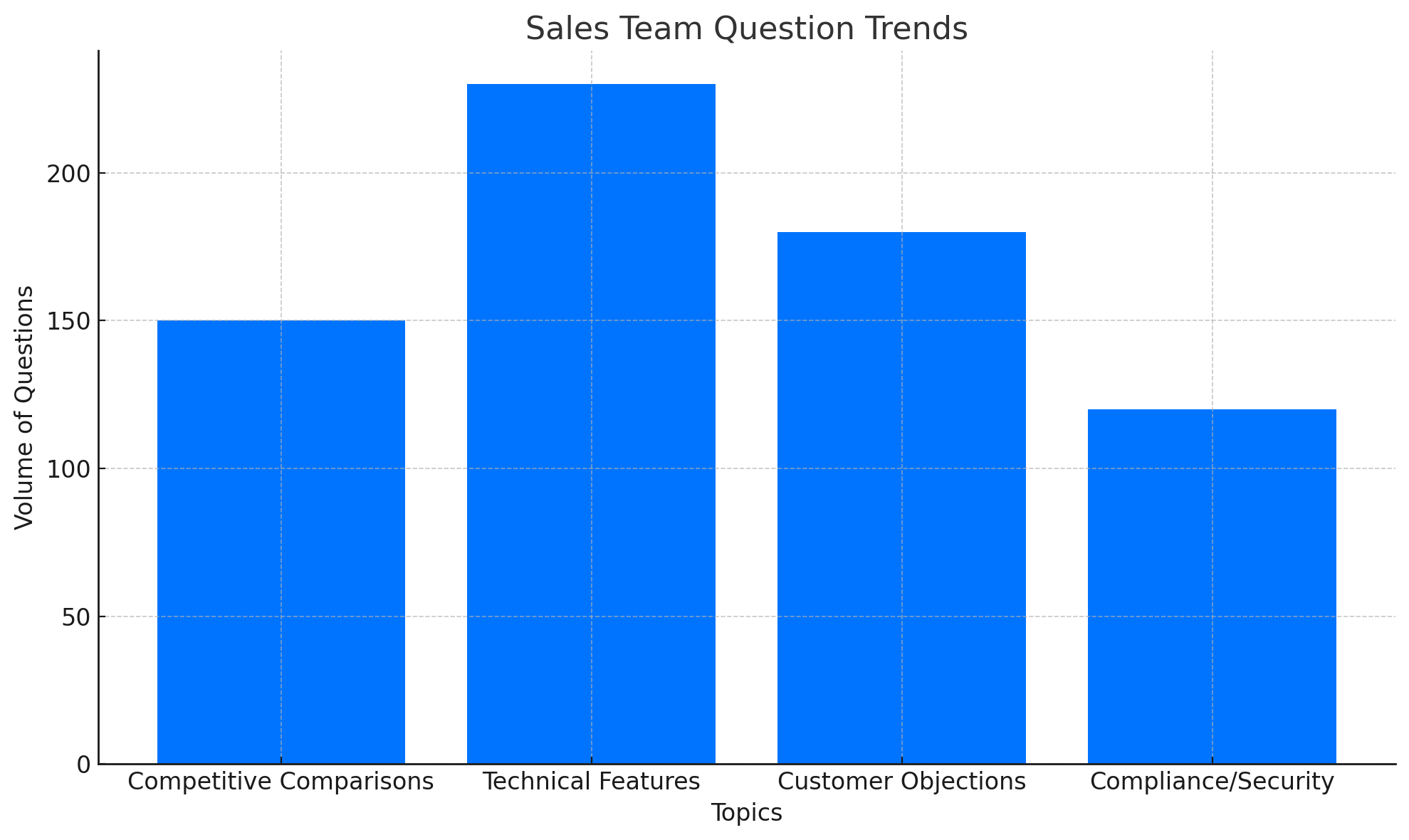
Pro Tip: If you’re using a tool that allows you to monitor user queries, incorporate that into your feedback process. A user might not leave a negative review for a piece of content, but you might notice them arguing with the AI if they’re unsatisfied with its output. We’ve seen countless examples of users who are hesitant to share feedback but seem to have no trouble yelling at their chatbot.
3. Tool Consolidation
So many tools, so much budget.
So WHY are businesses moving to downsize their sales enablement tech?
Over the past decade the Sales tech stack has consisted of stacking one tool on top of another. This was effective for a while, but now we all just have way too many tools, with lots of overlap.
Sales reps are bouncing from tool to tool. They have dozens of tabs open at any given moment. Tool fatigue has become a distraction for many teams.
It’s no surprise that businesses that one this year’s biggest trends is how businesses are consolidating their GTM tech stack.
An average of 40% of SaaS licenses are still going unused, with low adoption rates persisting.
Productiv State of SaaS 2024 report
That is an absolutely bonkers statistic. It gets even more interesting when you look at how tool bloat has grown over the years:

According to BetterCloud, the trend towards consolidation is not only driven by budget concerns, but a desire to simplify operations across an increasingly complex IT environment.
Our advice? If your team is downsizing your tech stack this year, focus on keeping enablement tools that emphasize automation. Those are the products that are most likely to play well with the other trends described here.
4. Microlearning Replaces Big Sales Training
Your sales team is not going to come out of the gate on their first day on the job with all your company information locked into their brains. It doesn’t matter how much training you provide. They’re going to forget most of it in a matter of days.
It’s human nature.
They’re salespeople. Not robots (yet). And that’s a good thing.
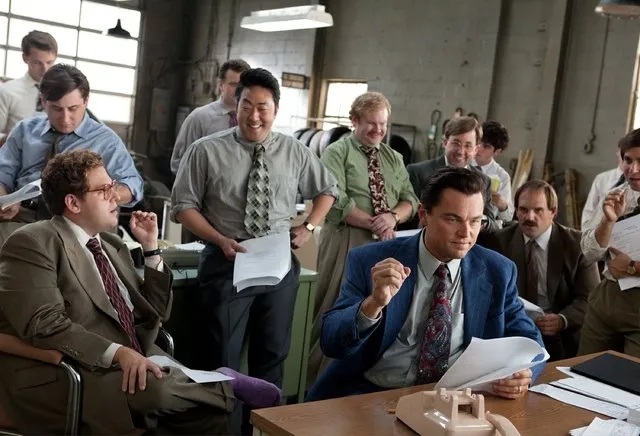
So, instead of trying to force more information into your sales team members’ heads, it’s time to leverage actual robots (well, AI, anyway).
More and more companies are realizing that sales reps, like all employees, want access to growth and development. They want opportunities to advance with your company. In fact, it’s what keeps them loyal and satisfied at work.
It’s up to you — leaders, managers, executives — to ensure your employees are always learning and feeling challenged.
Here are a few ways to do that:
Gamify training
Yes, you can make training fun. There are plenty of opportunities to turn training and upskilling into a chance for employees to compete with each other, learn new information, and win awards.
You can use LMS tools like Docebo to gamify learning. Docebo provides points, badges, leaderboards, and integrates social learning elements like user-generated content and peer feedback.

Keep gamification engaging and just challenging enough that your sales reps have to work to win but easy enough that everyone can win.
Recognize and celebrate your sales reps’ successes with a leaderboard, and don’t forget to show up and play as well. Modeling is the best way to get your team excited and fully bought in.
Make upskilling a constant
Even after you train your sales reps, you’ll want to make upskilling an essential part of the job. This is a natural part of career growth. Have a list of ongoing exercises or courses your reps can use to continue to get better at their jobs.
For example, you can use tools like HyperBound to help reps role-play. Hyperbound enhances sales team upskilling through AI-driven role-play simulations, personalized training scenarios, performance analytics, and accelerated onboarding to improve skills, confidence, and conversion rates.
Make training a self-service experience
You want your teammates to know they’re constantly supported and guided without needing to ask for help.
The more self-service support you provide, the better they’ll get at their jobs. One of the best ways to get into this flow of employee growth and opportunity is to automate sales coaching. Make it easy for them to have immediate access to all the information they need. You can do this by ensuring you have a centralized knowledge base with a tool like 1up that automatically generates accurate responses to your sales reps’ questions.
Users have told us that their reps might feel embarrassed to ask teammates a basic question, but are never embarrassed to ask an AI. That’s a huge improvement in how knowledge flows through an organization.
Manoj Abraham, COO @ 1up
5. Hyper-Personalized Content
This is where enablement and marketing crossover.
The standard elevator pitch for every customer just won’t work anymore. Spray and pray email span doesn’t work anymore.
Sales content is becoming hyper-personalized. You want to create a unique experience for every customer who comes across your brand through:
- Personalized Emails
- “Us vs Them” Competitive Content
- Custom Demo Environments
- Personalized Ads and Webpages
The use of personalization cannot be understated. Here are some examples of tools helping reps create personalized content:
- HubSpot Smart Content customizes website elements based on visitor data like location, device, or lifecycle stage. It delivers tailored experiences to boost engagement and conversions.
- Clay personalizes outreach by integrating data from multiple sources to craft tailored messages for each contact. It automates personalization at scale, enhancing relevance and engagement.
- Storylane enables interactive product demos by letting users experience features firsthand. It personalizes demos based on user behavior and preferences, driving engagement and conversions.
Here’s the thing – you don’t need AI to personalize. It’s part of the equation, but it’s not a requirement. Personalization can be done in many ways. It allows your sales reps to lead with empathy, to meet the customers at their pain points, and to act more like trusted advisors than salespeople.espeople.
Hyper-personalization analyzes online and offline behavior, search history, lifestyle, buying patterns, and preferences to determine the best action, product, or solution for each unique buyer. It combines data, analytics, AI, and automation to deliver truly tailored experiences.
Matthew Bowman, VP of Strategy @ Advanced Call Center Technologies
How Revenue Teams Use 1up to Automate Enablement
We’re seeing all 5 of these trends pushing adoption of 1up. That’s why teams at industry leaders like WalkMe, Gladly, and Deliveroo trust 1up to automate sales enablement.
Get started with a demo today.
Sales teams no longer have to waste time searching for knowledge, struggling with outdated resources, or distracting their teammates. 1up makes it possible to deliver the right knowledge, at the right time, without the friction.
1up centralizes all your sales content, training materials, and technical knowledge in one place, making it easy for reps to get instant answers to sales questions, handle objections, and even automate RFP responses. Instead of scrambling for information, your team can simply ask and get the right response—automatically.
Want to experience 1up?
Sign up for your 14-day free trial today.
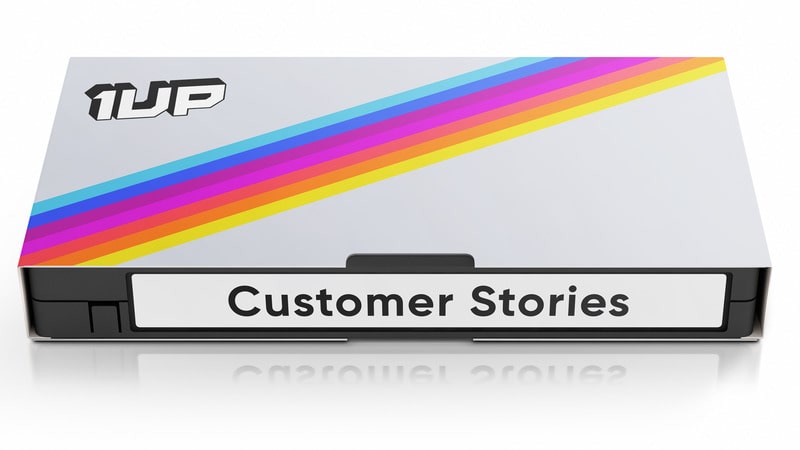
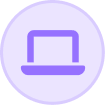

 Instagram
Instagram 